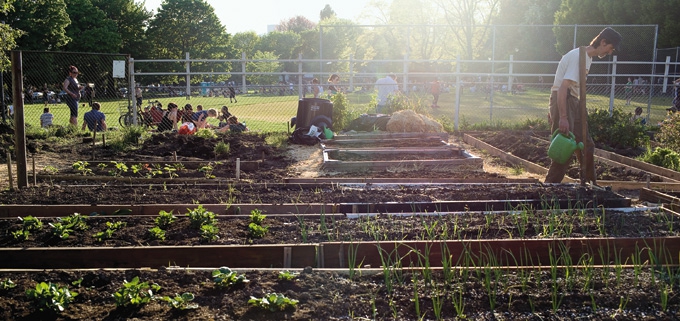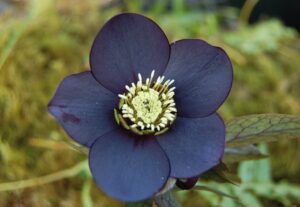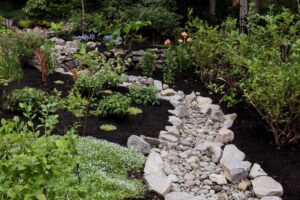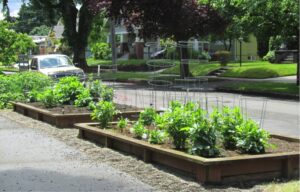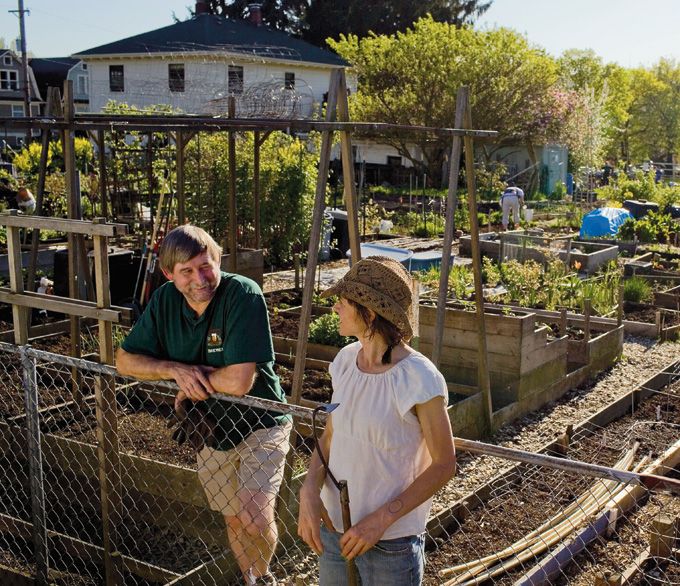 |
|
Above: Steve Knudson, garden manager at Colonel Summers community garden in Portland, and Lalena Dolby take a break from planting. Below: Colonel Summers, which was planted in 1980, is one of Portland’s oldest community gardens. // Photos by Carl Kiilsgaard |
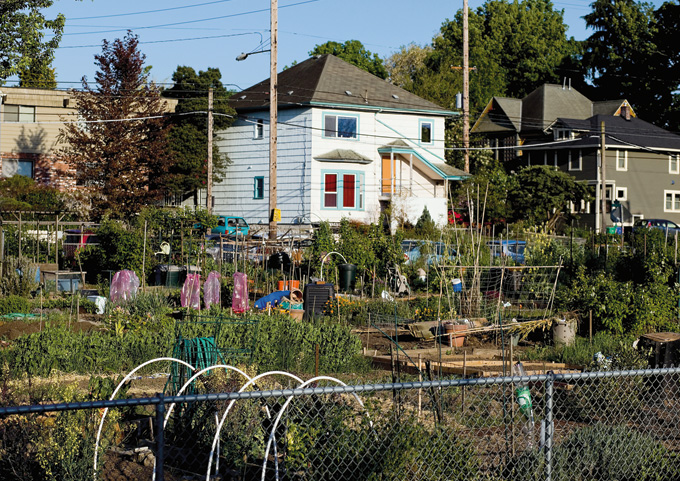 |
The community garden on the eastern edge of Southeast Portland’s Colonel Summers Park is a sight to behold — especially this time of year. Nearly an acre, it overflows with Sun Gold cherry tomatoes, fava beans, purple kale, blueberries, and strawberries. It has edged walkways and intricate trellises for green beans and raspberry canes; an enormous pear tree, two plum trees; and daffodils, dahlias and roses. And the garden boasts something else that you may not notice on first biking past: a core group of volunteers.
It’s no wonder people are lining up to garden at Colonel Summers. Nearly 200 people were on the wait list this past spring, according to Laura Niemi, the community gardens program coordinator at Portland Parks & Recreation. This is not unusual for community gardens in inner Portland, where demand for plots is at an all-time high. As of late May, only five of the city’s 45 gardens had plots available: Clarendon, Errol Heights, McCoy, Pier and Portsmouth. The city, as part of its big push to create 1,000 new garden plots by the end of the year, just opened five new gardens; only three of them have spaces left. Interest in community gardens has exploded in recent years — and not just in Portland. According to Ian Dixon-McDonald, who runs the Marion-Polk Food Share’s community garden program, there are 27 community gardens in the Salem-Kaiser area, quadruple the number there were in 2008. “When the season hits, they are pretty much all full,” says Dixon-McDonald.
Corvallis, which has four community gardens all located in city parks, is about to publish a community garden master plan that identifies 14 potential additional sites. (The city and the Benton County Health Department just received a $360,000 grant from the Robert Wood Johnson Foundation to increase access to healthy food in South Corvallis and rural Benton County.)
The city of Eugene’s Parks & Open Spaces department has a wait list for all six of its gardens, and in Bend, which has just one community garden run by its parks and rec department, there are plans afoot to break ground on new gardens in the next two years.
The rewards
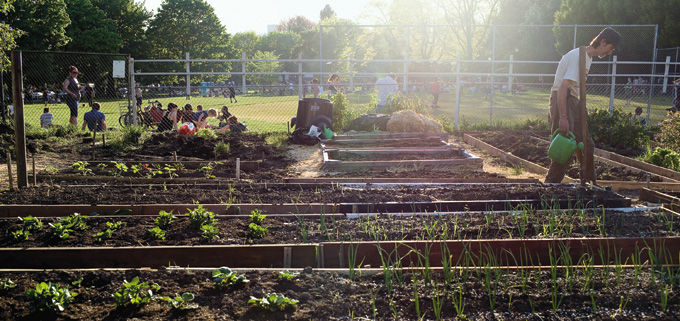 |
|
Above: Indefatigable volunteer Seth Rockwell waters the plants at Colonel Summers garden. Below: Steve Knudsen is known for his tomatoes. “My tomatoes have gotten so much better since I’ve started taking his advice,” says longtime member Mallen Kear. // Photos by Carl Kiilsgaard |
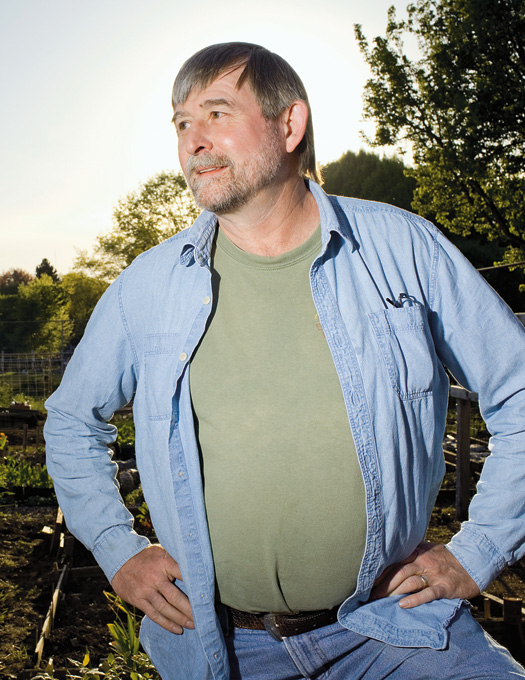 |
There are many reasons for this surge in demand. Some people, like Laleña Dolby at Colonel Summers, are interested in the concept of community gardening — connecting with neighbors and sharing gardening know-how (not to mention tools). Others sign up for a plot because their backyards are too shady or they live in apartments without yards. But many Oregonians hit hard by the recession are growing their own produce to save on grocery bills.
“It’s super affordable,” says Dolby, noting that the annual fee she pays for her little patch of land, $85, includes water. Dolby, who does a lot of canning and fermenting, typically sources 95 percent of her fruits and veggies from her 400-square-foot plot. She even barters veggies for fresh bread. (A friend is a baker.) Marc Schiedecker, 63, is the manager at Gilbert Heights Community Garden on 130th and Boise Avenue. He lost his job at a law firm a few years ago, and he and his wife, who is 72, eat from the garden year-round. “This is not just a hobby for us,” says Schiedecker. “We need this.”
To thrive, a community garden needs active volunteers who are willing to take on work beyond their own gardening. Colonel Summers has this in spades, says garden manager Steve Knudsen, an account manager at Bonneville Power Administration. A few of these, like Dolby, serve as unofficial managers, helping Knudsen organize work parties, seed exchanges and other projects.
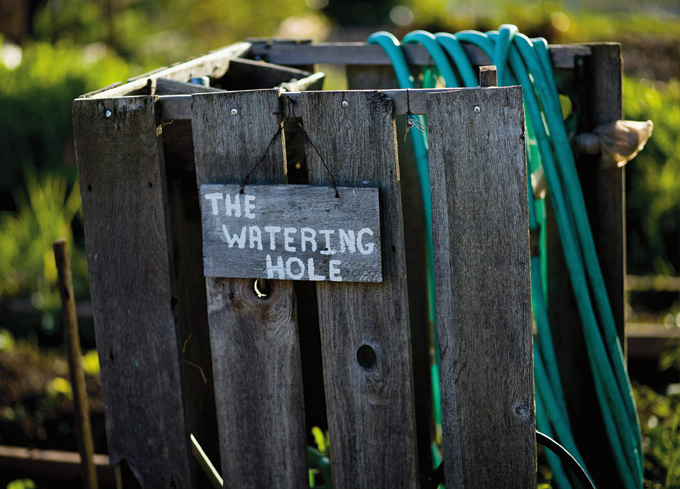 |
|
Above: A community water station at Colonel Summers is available for all gardeners to use. Below: Marc Schiedecker, manager of Portland’s Gilbert Heights Community Garden, drapes greenhouse plastic over his cold-frame structure in the winter so that he can grow veggies year-round. // Photos by Carl Kiilsgaard |
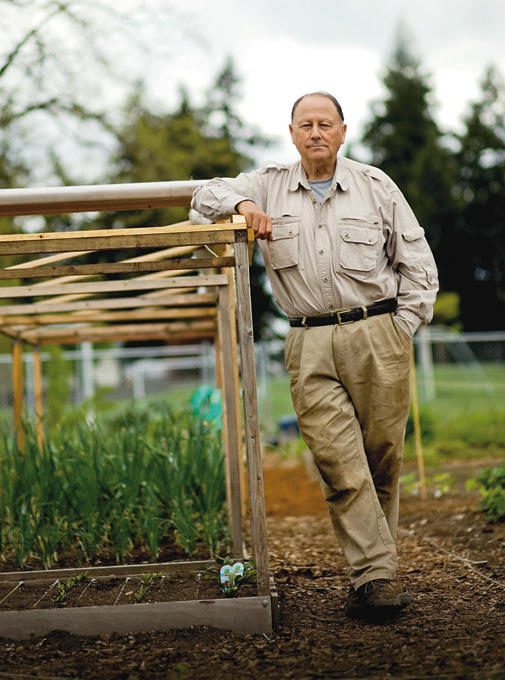 |
Dolby, whose day job is director of development at Zenger Farm, spearheaded a communal herb garden. Longtime members Mallen Kear and Seth Rockwell, a construction worker, have their own areas of expertise. Rockwell, who was garden manager for a decade, can still be found at the garden on weekend mornings building raised beds and maintaining pathways. Kear, a retired nurse who now works as a nanny, writes and edits the garden newsletter (with help from member Joan Miller). She also oversees the garden’s participation in Produce for People, whereby community gardens donate fresh produce to food banks. During harvest, Kear and eight volunteers delivered nearly a ton of produce to Fish Emergency Service.
Starting a new community garden comes with challenges of its own. When Gilbert Heights opened two summers ago, it took the city a few weeks to fix a burst pipe, which meant the gardeners had no water access. “There were just three of us at the time,” says Gloria Moe. “We were a low priority.” Moe had to lug water to the garden in her car until the pipe was fixed.
Neglect and even abandonment are common problems, and it can take time to weed out the slackers. Many new gardeners don’t realize how much work it takes to stay on top of a 400-foot plot, and this lack of attention can result in rotting tomatoes and weed-choked beds. Last summer a few gardeners at Gilbert Heights with plots adjacent to the fence let their vegetables rot.
“We had people walking by that are poor and hungry, and they asked, ‘Can we come in and pick that?’” Schiedecker says. Schiedecker was embarrassed, but he had to say no, explaining that they weren’t his plots. “We’re not a backyard garden,” says Schiedecker. “What we do affects the property values of the homes in this neighborhood.” The irresponsible gardeners got a call from Laura Niemi at Parks & Recreation, who offered them smaller plots this season.
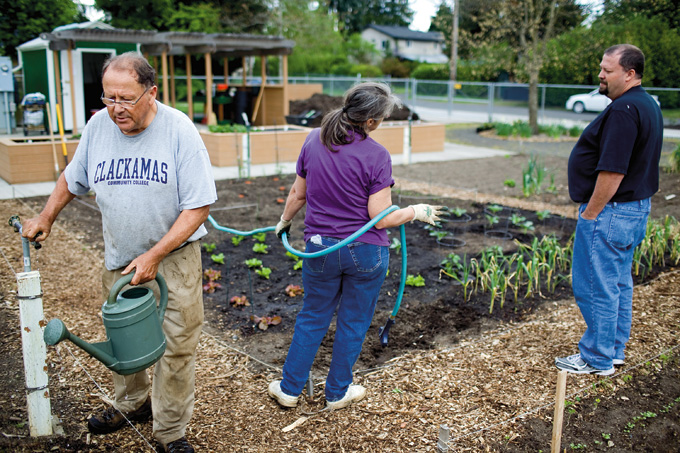 |
|
Schiedecker, gardener Gloria Moe and Marc Schiedecker Jr. are busy at work in the Gilbert Heights garden. //Photos by Carl Kiilsgaard |
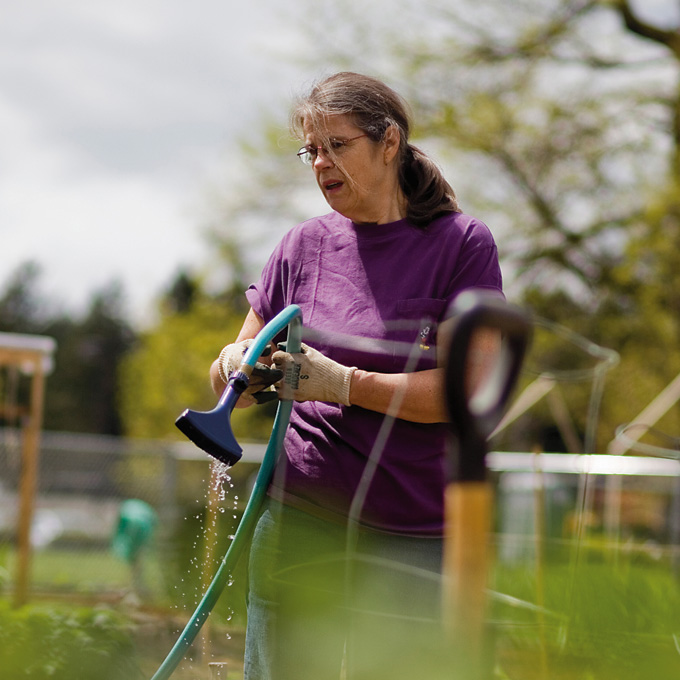 |
Vandalism is not uncommon. Both Colonel Summers and Gilbert Heights have had marauders jump the chain-link fence and pilfer produce. Last summer a group of kids broke into Gilbert Heights and had tomato and watermelon fights. In the winter vandals stamped on Schiedecker’s raised beds, punching holes in his plastic agri-fabric. “I lost almost my whole winter crop,” Schiedecker says. But he and Niemi are developing a proactive strategy that includes meeting with students at the neighboring elementary school, giving them earth pots (biodegradable pots that make transplanting starts easier), seeds and short lessons on gardening.
Such hurdles are a small price to pay for the joy that comes from getting your hands dirty and growing your own food. “It’s great therapy. It’s good for the spirit,” Schiedecker says. “Many times I’m by myself, working with beautiful plants. It’s so peaceful.”
Dolby agrees, but she has also come to relish the random interactions that happen at Colonel Summers Park. “I love it when there’s some twenty-something goth kid who talks to me over the fence. It’s amazing how many people don’t know how a community garden works.” She’s happy to spread the word.
A plot of your own
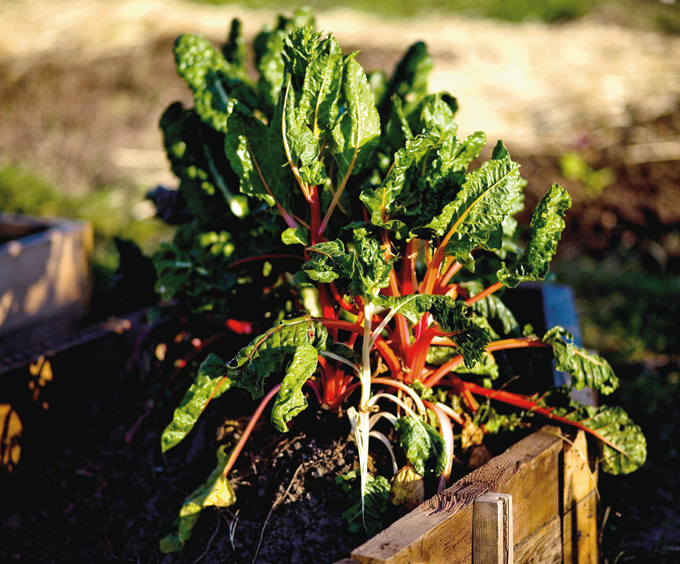 In addition to the gardens listed here, each city has a handful of community gardens that are run by churches, neighborhood associations and community centers. To find guerrilla gardens in your area, check out the Oregon chapter of Food Not Lawns at foodnotlawns.com.
In addition to the gardens listed here, each city has a handful of community gardens that are run by churches, neighborhood associations and community centers. To find guerrilla gardens in your area, check out the Oregon chapter of Food Not Lawns at foodnotlawns.com.
Ashland
The city’s parks and recreation department operates four community gardens. Plots range from $25-$75, depending on the garden and plot size. To apply, contact Linda Chesney at [email protected] or 541-488-6606. For locations and more info, see the City of Ashland’s web site (ashland.or.us).
Bend
The only community garden operated by Bend Park & Recreation is Hollinshead Park, which is comanaged by OSU Extension. Call Jacquie Siewert-Schade at 541-593-9305 for more information.
Corvallis
Three of Corvallis’ four community gardens are run by the Corvallis Environmental Center: Avery Community Garden, Dunawi Cree, and SAGE garden. Plots range from $25 to $55, depending on size and garden. To apply for a plot (or add your name to Dunawi Creek’s wait list), e-mail the coordinator at [email protected]. To apply for a plot at Peanut Park, call 541-766-6918.
Eugene
All six of Eugene’s community gardens are full, so applications are chosen via lottery. There’s a wait list of about 50 people. Choose from three plot sizes: 400 square feet ($100), 200 square feet ($60 a year), and a 160-square-foot raised bed ($25). Download registration forms for the lottery at eugene-or.gov.
Portland
The city’s parks and recreation department runs the community garden program and sometimes donates wood chips and mulch. Local nurseries often donate seeds and tomato starts. The smallest plot available — 10×10 feet — is a steal at $21 a year. Medium-size plots (10×20 feet) are $43 a year, and large ones (20×20 feet) are $85. Apply online at portlandonline.com/parks.
Salem
The Marion-Polk Food Share oversees a network of 41 gardens. It also helps people start new ones. Gardens with a mission to help the poor don’t charge anything for plots; the most expensive plot fee is $35 a year. For information, see the Marion-Polk Food Share web site (marionpolkfoodshare.org).
How to start a community garden
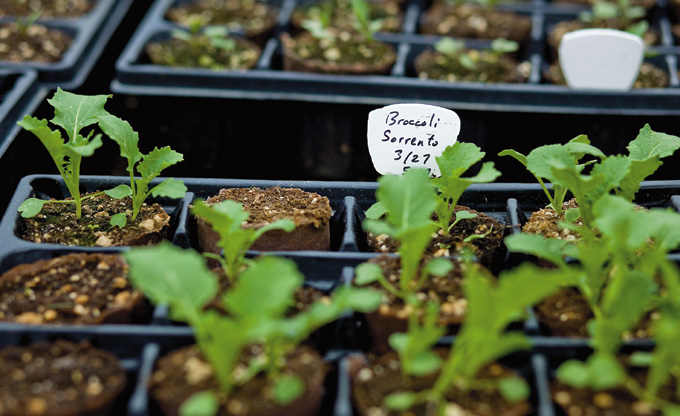 If there’s not a community garden in your neighborhood — or the idea of waiting a year or more for a spot doesn’t appeal to you — start your own. Here are a few tips:
If there’s not a community garden in your neighborhood — or the idea of waiting a year or more for a spot doesn’t appeal to you — start your own. Here are a few tips:
BUILD A COALITION
“The very first thing you want to do is have a dedicated group of people who really want to see this happen,” says Sue Domingues, who has started a few community gardens in Corvallis, including the Westside Community Garden. Laura Niemi of Portland Parks & Recreation agrees. “If the garden is not seen as a community asset, then it’s very hard to get people to be involved and care for it.”
CHOOSE A SITE
“Take some neighborhood walks to find empty lots and see what spaces are available,” advises Ian Dixon- McDonald, who runs Marion-Polk Food Share’s community gardens program in Salem. It doesn’t have to be city-owned land. Schools, churches and Boys & Girls Clubs often have vacant lots, and many will lease them for free. The site should get unobstructed sun and should be graded to assure drainage but still accessible to seniors and people with physical disabilities.
TEST THE SOIL
Before you commit to the site, test the soil for heavy metals such as lead and other chemicals. The Essential Urban Farmer has a chapter on this. For optimum fertility, the soil should be sandy loam, and relatively free of stones and debris. (Read more at OregonHomeMagazine.com)
WATER ACCESS
Your site should have access to city water or a well. Even if your city doesn’t have the resources to fund community gardens, it will usually waive water fees. If not, find a donor such as a neighborhood association, church or local nonprofit.
RAISE FUNDS
Community gardens aren’t cheap to start. In Portland, where Parks & Recreation subsidizes the gardens by 60 percent, the cost to start one is $30,000-$45,000. If your city is strapped for cash, tap into local businesses, nonprofits, neighborhood associations and Rotary Clubs.
THE BEST URBAN GARDENING BOOKS
These four guides are must-haves for any urban gardener in the Northwest
• The Essential Urban Farmer, by Novella Carpenter and Willow Rosenthal ($25) A 500-page nuts-and-bolts guide to farming in the city complete with sample garden designs and detailed illustrations.
• Growing Vegetables West of the Cascades: The Complete Guide to Organic Gardening, by Steve Solomon ($22). The bible of Pacific Northwest vegetable gardeners. Advice such as preparing soils, composting, and crops for small plots is tailored to the unique climate of the Northwest.
• Better Vegetable Gardens the Chinese Way, by Peter Chan. Chan, who emigrated to Portland from China in the 1970s, taught a popular gardening class about raised beds at Portland State University. His wisdom is distilled in this unfortunately out-of-print book. But used copies are available at Amazon.
• The Maritime Northwest Garden Guide, by Rob Peterson and Karl Elliott ($15) An indispensable and accessible month-by-month guide to organic gardening in the Northwest, published by Seattle Tilth. Includes a monthly gardening calendar, a Northwest climate zone map, and tips for extending the growing season.



